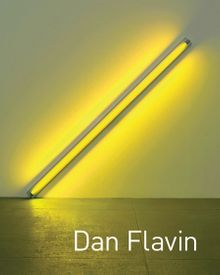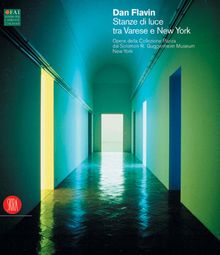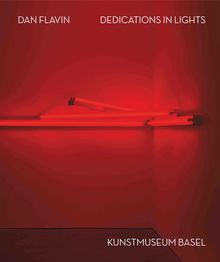ARTIST MONOGRAPHS
|
|
in stock $70.00 Free Shipping UPS GROUND IN THE CONTINENTAL U.S. |
 Dan Flavin
Dan Flavin
Published by Hatje Cantz.
Text by Rainer Fuchs, Karola Kraus, Stefan Neuner, Juliane Rebentisch, Roland Wäspe.
Dan Flavin (1933–1996) was born in New York to Irish-Catholic parents. During military service in 1954–55, he was trained as a meteorological technician; returning to New York in 1956, he studied art at the Hans Hofmann School of Fine Arts and at Columbia University. Following his development of neon sculpture, Flavin’s first museum exhibition was held at the St Louis Art Museum in 1973. Just two days before his death in November 1996, Flavin completed the design for his famous installation at the Menil Collection in Houston.
PUBLISHER
Hatje Cantz
BOOK FORMAT
Hardcover, 8.25 x 10.5 in. / 260 pgs / 200 color.
PUBLISHING STATUS
Pub Date 2/28/2013
Out of print
DISTRIBUTION
D.A.P. Exclusive
Catalog: SPRING 2013 p. 14
PRODUCT DETAILS
ISBN 9783775735230 TRADE
List Price: $30.00 CAD $40.00
AVAILABILITY
Not available
STATUS: Out of print | 00/00/00 For assistance locating a copy, please see our list of recommended out of print specialists |
 It Is What It Is: Writings On Dan Flavin Since 1964
It Is What It Is: Writings On Dan Flavin Since 1964
Published by Ridinghouse.
Text by Paula Feldman.
Dan Flavin’s radical use of fluorescent light throughout and beyond the 1960s forever changed the definitions of sculptural practice. This volume is an indispensable anthology on one of the central figures of Minimalism.
Spanning four decades, It Is What It Is charts the evolution of consensus about the meaning of Flavin's art, highlighting the gradual acceptance to his ideas and his profound influence on postwar art history.
Key essays on the artist and reviews of his exhibitions are assembled together for the first time in this volume, including some of the most influential artists, art critics and art historians working today – from Donald Judd and Lucy R. Lippard to Hilton Kramer and Rosalind Krauss.
PUBLISHER
Ridinghouse
BOOK FORMAT
Paperback, 6.13 x 8.25 in. / 294 pgs.
PUBLISHING STATUS
Pub Date 10/1/2011
Out of print
DISTRIBUTION
D.A.P. Exclusive
Catalog: Publisher Backlist
PRODUCT DETAILS
ISBN 9781905464449 TRADE
List Price: $29.95 CAD $45.00
AVAILABILITY
Not available
STATUS: Out of print | 00/00/00 For assistance locating a copy, please see our list of recommended out of print specialists |
 Dan Flavin: Rooms of Light
Dan Flavin: Rooms of Light
Works Of the Panza Collection Form Villa Panza, Varese And The Solomon R. Guggenheim Museum, New York
Published by Skira.
By Angela Vettese.
PUBLISHER
Skira
BOOK FORMAT
Paperback, 9.5 x 11.25 in. / 120 pgs / 33 illustrations.
PUBLISHING STATUS
Pub Date 12/17/2004
Out of print
DISTRIBUTION
D.A.P. Exclusive
Catalog: Publisher Backlist
PRODUCT DETAILS
ISBN 9788876240911 TRADE
List Price: $29.95 CAD $37.50
AVAILABILITY
Not available
STATUS: Out of print | 00/00/00 For assistance locating a copy, please see our list of recommended out of print specialists |

